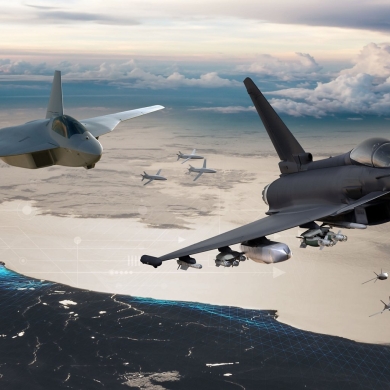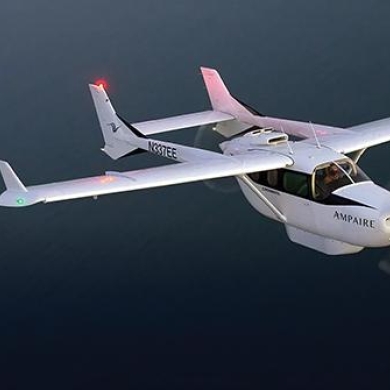January 20, 2021
Programme d'innovation en cybersécurité du Québec
S'unir pour innover L'objectif Réaliser des solutions innovantes à des problèmes complexes en cybersécurité. Le PICQ propulse l'innovation en cybersécurité au Québec. Il s'y emploie en favorisant la croissance, la création et la rétention de PME au Québec et en collaboration avec les grandes entreprises. Dans le cadre du PICQ, un bassin de chercheurs de classe mondiale profite aux universités québécoises gr'ce au renforcement de partenariats industriel‑chercheur. Le partage des expertises et la mise en commun des savoir-faire génèrent ainsi des solutions innovantes et créatives à des problèmes complexes en matière de cybersécurité. Nos partenaires Travaillant de pair avec des organisations consacrées à la promotion de la cybersécurité (In-Sec-M, CyberEco et V1 Studio), Prompt administre le PICQ. Il offre des opportunités de financement et d'accompagnement stratégique au développement de projets en cybersécurité. Ce faisant, Prompt et ses collaborateurs participent activement à la création d'une nouvelle génération d'innovations en cybersécurité au Québec. Constitution Les entreprises partenaires du PICQ et les centres de recherche collaborateurs sont: PME Streamscan PM SCADA In Fidem Terranova Security Vumetric ZEROSPAM Sécurité Inc. Sentiom Mondata Flare Systems Go Secure Canada Inc. Iptoki Devicom Qohash Inc. Fortica Knox Industries Inc. Quickseries Publishing Inc. Conatix du Nord Inc. Solutions Caristix Inc. Technologies Timechain Inc. Veriphi Inc. Satoshi Portal Noviflow Inc. Optable Technologies Inc. Xpertics Solutions Inc. Grandes entreprises Element AI Becker-Carroll Banque Nationale du Canada Catallaxy Consulting Inc. (Filière de Raymond Chabot Grant & Thornton) Lightspeed POS Inc. Universités, centres de recherche et secteur public Université Concordia Université McGill Polytechnique Montréal CyberQuébec (CCTT) Ville de Gatineau CRIM ÉTS Université Laval Université du Québec à Chicoutimi Université du Québec en Outaouais (UQO) Université de Sherbrooke Laboratoire d'Identité numérique Nouveaux membres à venir. Vue d'ensemble du programme Ce programme est conçu pour propulser l'innovation par le biais de maillages entre industriels et chercheurs. D'ici trois ans, nous entrevoyons l'atteinte des résultats suivants: 50 projets d'innovation en cybersécurité; 8 M$ investi en R-D et développement; 60 nouveaux produits, services, processus et solutions créés, etc. 35 partenariats de recherche industrielle; 400 emplois. Impliquer des experts de niveau postsecondaire dans vos travaux d'innovations via les programmes MITACS. Une collaboration académique valorisée dans le cadre des projets PICQ. Pour en savoir plus, visitez https://www.mitacs.ca/fr Comment fonctionne le financement Jusqu'à 25% du budget de votre projet d'innovation en cybersécurité pourrait être financé par le PICQ. De plus, il est possible de demander une aide financière provenant des gouvernements du Québec et du Canada sans excéder un financement total de 50% de la valeur du projet. Pré-qualification Remplissez ce formulaire pour que l'équipe de Prompt puisses étudier l'admissibilité de votre projet TÉLÉCHARGEZ LE FORMULAIRE DE PRÉ-QUALIFICATON Appel à projets continu pendant l'automne 2020 Prompt formera un comité de sélection pour évaluer les demandes qui seront déposées au fur et à mesure. Faites vite car il s'agit de la dernière tranche de subvention disponible. Les dépenses seront admissibles à la subvention à partir de la date de dépôt du projet. Le projet doit être réalisé avant le 31 mars 2022. POSTULEZ EN LIGNE Le formulaire et le guide du programme restent disponibles pour consultation. La version anglaise est aussi disponible sur le site anglais. Documents du PICQ : les versions les plus récentes De temps en temps, nous ajoutons des améliorations et des modifications aux documents du programme. Avant de commencer de décrire votre projet PICQ, veuillez s'assurer d'avoir en main les versions les plus récentes du formulaire d'application et le guide du programme. Guide du programme : V.04.1.2| Version Mai 2020 Formulaire d'application : Formulaire V.4.0| Version Mai 2020 TÉLÉCHARGER LE GUIDE DU PROGRAMME TÉLÉCHARGER LE FORMULAIRE PDF FAQ sur la plateforme d'application en ligne Une FAQ est disponible pour vous aider dans votre processus d'application. Vous y trouverez les mentions relatives à la sécurité des données transmises. ACCÉDER À LA FAQ Nous restons à votre entière disposition pour vous aider dans votre processus d'application. N'hésitez pas à nous contacter via projetsPICQ@promptinnov.com Les initiatives dans l'écosystème de la cybersécurité au Québec s'étendent dans de nombreuses industries VISIONNEZ NOTRE WEBINAIRE : Appel à projet Fintech VISIONNEZ NOTRE WEXPERT - Meilleures pratiques de cybersécurité pour le télétravail (11 juin 2020) VISIONNEZ NOTRE WEXPERT : La cybersécurité en temps de télétravail avec Martin Berthiaume, PDG Mon Data (2 avril 2020) https://promptinnov.com/cybersecurite-2/








